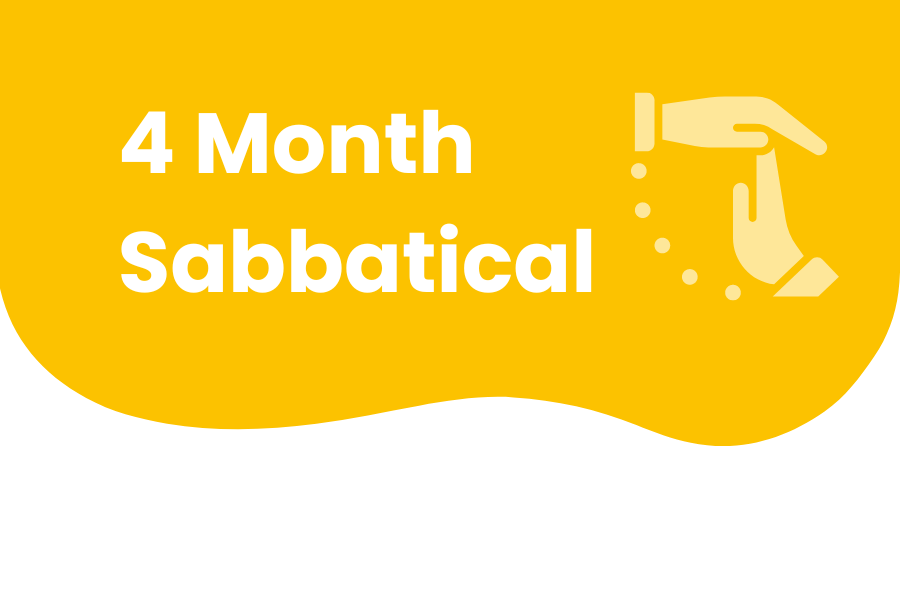6 Ways Top Leaders Navigate Difficult Employee Situations

There’s a lot of joy in being a leader. Especially in purpose-driven companies, you get to make a difference in the lives of your employees every day. Whether you’re witnessing a team member master a new skill or doling out end-of-year bonuses, there are endless moments that make you pause and think, “I can’t believe this is my job.”
That’s the fun part — but there’s another side to leadership that isn’t quite as fun. We’re talking about the challenges that keep you up at night, like the difficult decision to let someone go, or the betrayal you didn’t see coming. Maybe it’s that tough feedback you’ve been putting off giving for months. Every leader faces situations where you’re just not sure what to do next, and it takes courage to take the next step forward.
The good news? You’re not alone. Here’s how six top leaders navigate some of the most difficult employee situations.
Every leader faces situations where you’re just not sure what to do next, and it takes courage to take the next step forward.
Difficult Employee Conversations
Most leaders know that feedback is crucial to the success of their employees and their company, yet the majority of us avoid giving feedback or rush through it in order to get uncomfortable conversations over with. If there’s a difficult conversation you need to have with a team member, Claire Lew, CEO of Know Your Team, has four quick tips on giving tough feedback to employees.
Giving Tough Feedback
1. Give feedback from a place of care.
When giving feedback, come from a place of care. Ask yourself, "How do I let this person know I have good intentions?" Frame the conversation by stating that you're giving this feedback because you care about the person's individual growth on the team. When you come from a place of care — even if the message is hard to hear — you're much more likely to form a partnership with the employee and reach new heights together.
2. Give feedback from observation.
Next, determine the noticeable, observable behaviors from this employee that could be changed or improved. We often don’t talk specifics. Switch your language to observation-based statements like, "When I saw you did (a certain behavior), it made me feel (a directly related emotion)."
Importantly, follow up any observation-based feedback by naming a specific, positive result you'd like to see come from this conversation. What would success look like in this situation? What's the opportunity to achieve a better result next time?
3. Give feedback from a place of fallibility.
Employees often take feedback from higher-ups much harder than if it came from a peer. If you can approach feedback from a place of fallibility, you'll help employees understand that although you may have a critique, your thoughts are simply an interpretation of a given situation.
Let's say someone made a mistake while writing an email to a client. Take this time to ask them if there is anything you could have done to make the email easier to send. Feedback is not an ultimate truth — it is simply an opportunity to share your take and acknowledge their opinion, too.
4. Give feedback from a place of curiosity.
Think about giving feedback as a dialogue between two equal parties. Constructive feedback is defined by curious questions that prompt meaningful conversation. When you're giving feedback, immediately follow up your comments with a question like, "What do you think?" Ask them if there is anything you've missed. You'll be surprised what employees share — and what you'll learn — when you open the door for an honest, two-way conversation.
You'll be surprised what employees share — and what you'll learn — when you open the door for an honest, two-way conversation.
Dealing with a Bad Hire

If you ask nearly any purpose-driven leader about the toughest challenges they’ve faced, it almost always comes back to people. Letting someone go isn’t an easy decision to make, but it’s a situation we all face throughout our careers. There are many reasons to part ways with an employee — maybe they’ve violated one of your core values, or maybe the organization has simply outgrown them.
While no leader wants to say goodbye to an employee, keeping someone on when they’re no longer a fit can be toxic for your culture. Make sure you’ve got the right people in the right seats by keeping this rule of thumb in mind: “Hire slow, fire fast.” Navigating an employee departure isn’t easy, but taking a purpose-driven approach will make the process less painful for everyone involved.
Hire and Fire by Core Values
At Chief Outsiders, a thorough interview process helps vet candidates for not only their skillset, but also alignment with the company’s core values. But mistakes happen, and it’s likely that at some point, you’ll have to say goodbye to someone who’s not a good culture fit. It’s happened at Chief Outsiders, but as they continue to strengthen their vetting process, it’s happening a lot less. When you start to notice that someone’s not a good fit — whether it’s their performance or their behavior — start by evaluating their values alignment.
For purpose-driven leaders, the golden rule is to hire and fire by your values. But in between hiring someone and letting them go, there are plenty of checkpoints along the way. Incorporate values into your performance reviews and rewards and recognition to ensure that values are always part of the company conversation. Likewise, these strategies allow company leaders to continuously check for values alignment and take every opportunity to re-align someone who’s drifting from the culture.
When someone’s not the right fit, the whole team knows it — and when they see you act on it, it actually strengthens the culture.
When nothing else can be done and it’s time to part ways, frame your conversation around which values were violated and when. If you’ve been consistently having these conversations, the team member will know it's coming and won’t be caught off guard. At Chief Outsiders, they’ve found that every time they’ve let someone go for culture fit, the organization thanks them. When someone’s not the right fit, the whole team knows it — and when they see you act on it, it actually strengthens the culture. Read more of Chief Outsider’s lessons learned about hiring and firing by core values.
Reset the Culture
When negativity and gossip become widespread, it’s time to take a closer look at how strong your culture really is. Is everyone aligned with your values, purpose, and vision? Does everyone understand the behaviors associated with your core values and how to live them on a daily basis? Often, when one or two toxic employees turn into four or five, it’s your first red flag that there are cracks in your foundation.
In the early years at IMPACT, CEO and Founder Bob Ruffolo was hiring for skills and resume over culture fit. They had amazing growth, but their team members were all over the place. There was no alignment or shared vision, and before long, negativity spread throughout the office. “It was my fault,” says Bob. “I let it go on too long.”
He made the difficult decision to let go of five employees that simply didn’t fit, rounded up his remaining team members, and together they pressed the reset button. Bob seized the opportunity to realign and redirect the company, and articulate a new vision together. Bob and his team went back to the drawing board and crafted new, clearly-defined core values and a vision that reflected everyone on board. “I put down my vision, and everyone contributed theirs — it was all hands on deck,” says Bob.
Since then, they’ve started keeping closer tabs on their culture and core values. Now, everyone is evaluated quarterly to assure alignment with the company culture, and if there are discrepancies, they have a 30-day program to help team members focus on core values.
Wage Equality
As leaders, we do our best to create a fair and equitable place to work. But the reality is that the inequalities of the world around us tend to find their way into our workplaces. Often, that shows up in the gender and racial wage gaps plaguing our society. One purpose-driven business at a time, we can start to close the gap and create more equality in business.
But wage equality is about more than the numbers — it’s about recruitment and hiring, training and development, and even family leave policies. Here’s how top leaders are taking steps to level the playing field and promote more inclusive workplaces.
Equal Work, Equal Pay
In Jason Fried and David Heinemeier Hansson’s latest book, It Doesn’t Have to Be Crazy at Work, they share how Basecamp promotes wage equality by hiring the work, not the resume. Many companies shrink their pool of candidates — and keep it pretty homogenous — by screening for criteria like pedigree, education, and years of experience. “What we care about is who you are and what you can do,” writes Fried and Heinemeier Hansson. “For example, when we're choosing a designer, we hire each of the finalists for a week, pay them $1,500 for that time, and ask them to do a sample project for us.” That way, they’re able to focus on the person and their work instead of the resume, and they also end up giving more people a chance.
Offering parental leave to both partners encourages shared caregiver responsibilities and is linked to an increase in mothers returning to work full-time.
Family leave policies can also help promote gender equity and equal parenting. At Basecamp, employees can take up to 16 weeks of maternity leave and 6 weeks of paternity leave, at 100% paid salary. Top workplaces are making sure their family leave programs give mothers plenty of time to recover and care for their newborn, without any concern of repercussions at work. Likewise, offering parental leave to both partners encourages shared caregiver responsibilities and is linked to an increase in mothers returning to work full-time.
Raising the Minimum Salary
Megan Driscoll has long been an advocate for pay equality and female empowerment in business. After hearing how Dan Price raised his employees’ minimum salary to $70,000, Megan was inspired to follow a similar path at her company, PharmaLogics. Her team is comprised largely of young millennials, and although they could earn impressive commissions, she worried about how their base salaries might impede them from buying a home or repaying student loans. Ultimately, she decided to raise the base salary for 28 of her recruiters from $37,500 to $50,000 — all while keeping commissions in place.
The move also highlighted pay inequities throughout their system, giving Megan the opportunity to raise base pay for everyone in the company and correct certain gaps they’d overlooked. In the following year, employee retention and performance skyrocketed. “Pay equality is one of the biggest issues we face as women and leaders. We are devaluing our female contribution,” says Megan. “The only way to combat that is to pay women fairly and equally based on the position that they’re in.”
Managers Who Can't Lead
We’ve all been there: you promote an employee who’s great in their current role, but they flounder in their new position as a leader of people. Leadership doesn’t come naturally to everyone, but it is a skill you can teach and cultivate in managers who are still learning the ropes. If you have a new manager who’s struggling to understand what it means to lead with purpose, here’s one way to support their growth.
Professional Development Plans
Do you have a system in place for identifying and supporting struggling employees? At Booksource, Lisa Whealon spearheads the company’s People Planning Process, a tool for identifying future leaders and employees who need extra support. People Planning is a formal process that takes place three times a year so that talent development is always an ongoing conversation. The process gets company leaders together in one room to talk about talent at all levels of the organization, identify where each employee is performing, and look at their future potential.
When an employee’s performance is not where it should be, their supervisor sits down with them to put together a Professional Development Plan (PDP). Booksource’s PDPs take a more structured approach to employee development, documenting short-term and long-term goals, the steps they’ll take to get there, and deadlines. Often, the process helps uncover the root cause of an underperforming employee — maybe their role isn’t challenging them or their workload is overwhelming. PDPs document and articulate their current performance and their action plan so that there are no surprises down the road.![]()
Business is full of unexpected challenges that will put your leadership skills to the test. By now, you’re experienced enough to navigate difficult employee situations with purpose — but what about the rest of your team?
You can build a team of certified purpose-driven leaders when you enroll in the Small Giants Leadership Academy, a one-year learning program featuring virtual sessions and cohort meetups with top Small Giants leaders. We’re now enrolling for the next cohorts, launching October 2019!





Submit Your Comment